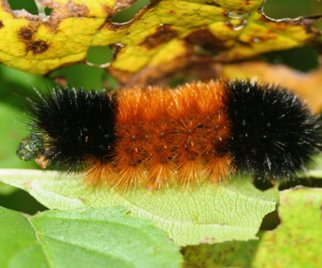The drought monitor report as of Tuesday, Feb. 18 continues to show slight improvement. Stafford County and part of Pawnee are totally out of drought. Barton is primarily abnormally dry with the northern third in moderate drought. The six to ten-day outlook (Feb. 25 to March 1) indicates a 60-70% chance of likely above normal for temperatures and a 33-50% chance of leaning below normal for precipitation. The eight to 14-day outlook (Feb. 27 to March 5) indicates near normal temperatures and a 33-40% chance of leaning above normal for precipitation.
With all of the recent extremely cold temperatures, there is naturally discussion regarding winterkill of the wheat crop. Today, what is winterkill? How does it happen? What makes it worse? Is there going to be winterkill?
• Winter wheat is a cool season grass, a monocot. This means that the seed stays in the ground at planting depth, unlike dicots like soybeans where the whole seed emerges from the ground. From planting until jointing (first hollow stem which is normally around mid-March here) the growing point is below ground at planting depth. Winterkill occurs when the growing point is destroyed by cold temperatures. Typically, when we see “winterkill,” it’s normally when the plant has broken dormancy. And often when we see damage it’s later after the growing point has emerged above the soil surface.
• Conditions that favor true winterkill include dry soils, poorly developed plants that aren’t well-established, lack of ground cover with residue or snow, and when the plant has broken dormancy. Winter hardiness, what the plant does to protect itself from winter, is greatest at the start of winter and decreases as we head toward spring. Warm temperatures can decrease winter hardiness and make plants more vulnerable. If the temperatures drop is severe from warmer weather it can present a problem. If the decrease is more gradual, the plant can regain some winter hardiness. It isn’t uncommon for extremely cold temperatures to “kill” the above ground growth. However, as long as the growing point is undamaged, this shouldn’t present a problem.
• So where are we regarding the previous bullet point? While not super moist, we have some soil moisture. We have not had extremely warm temperatures prior to the cold snap. Most wheat has a good blanket of snow to protect it. The majority of wheat was fairly well-established. Simply put, at least in most of our area, the wheat was in good shape to survive this cold snap. Time will tell, especially with the well-above normal temperatures predicted for the next week or so.
The old adage is that wheat like a cat, has nine lives.
Dr. Victor L. Martin is the agriculture instructor/coordinator for Barton Community College. He can be reached at 620-792-9207, ext. 207, or martinv@bartonccc.edu.





